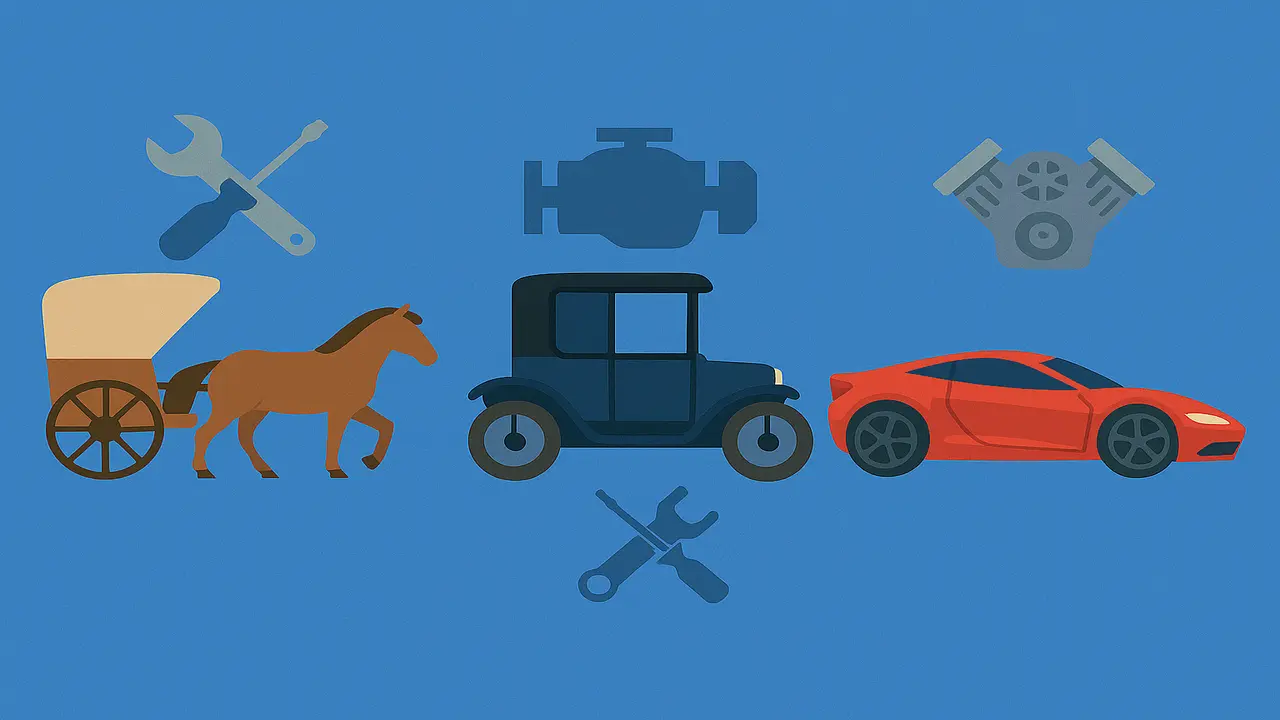The history of cars is a story of progress and innovation, taking us from humble horse-drawn carts to modern-day hypercars that can reach seriously eye-watering speeds. Centuries in the making, this evolution has transformed society, industry, and culture.
The Age of Horse-Drawn Carriages
Horse-drawn carts and carriages were used before cars were invented for transportation. They were the primary ways of moving goods and people for centuries. They worked well but were limited in speed, efficiency, and endurance. This need for a more reliable, faster way of transportation led to the first experiments with self-propelled vehicles.
The Invention of the Car 1700s 1800s
The automobiles first step was taken in 1769 when a French engineer Nicolas Joseph Huguenot built the Far die vapour the first steam-powered vehicle, which was ready for the transport of artillery.
But its unwieldy design and technical inefficiency kept it from being widely adopted. In the 19th century, more experimentation occurred using steam power, with inventors like Richard Trevino and Goldworthy Gurney pioneering road locomotives. However, steam cars were also subject to regulatory problems, weight issues, and limited public acceptance. The actual breakthrough was the birth of the internal combustion engine. In 1876, Nikolai Otto invented the four-stroke internal combustion engine, the basis for almost all modern gasoline-powered vehicles 53.
A few short years later, in 1886, Karl Benz unveiled the Benz Patent Motorwagen which is considered by many to be the first true automobile. Roughly contemporaneously, Goteborg Daimler and Wilhelm Payback created their own gasoline-powered vehicle, and the automotive industry was born.
Mass Production & The Birth of the Car Industry 20th Century
The mass production of automobiles in the early 20th century brought them within reach of the general public. Among the key figures of this period was Henry Ford, who changed the industry with the launch of the Model T in 1908. Ford’s version of the assembly line drove prices down, making cars less expensive.
General Motors and Chrysler were just some of the various car manufacturers that established themselves as automobiles became mainstream. Luxury vehicles emerged in the 1920s and 1930s with marques like Rolls-Royce and Cadillac serving up the elite.
Automotive production became focused on military vehicles during World War II, 1939- 1945, but the years after the war were marked by revolutionary changes in design, performance, and safety.
The 1950s and 1960s brought stylish designs. Sleek, stylish styles were introduced in the 1950s and 1960s with features like power steering and automatic transmissions, and improved safety features.
The Performance Era: Technology Late 20th Early 21st Century
The 1970s and 1980s also saw huge developments in automotive engineering with better aerodynamics, fuel economy, and performance. The 1970s oil crisis spurred manufacturers to develop a more fuel-efficient mode, giving the compact car, which consisted mainly of Chinese cars. And in China, Japanese automakers, including Toyota and Honda. Supercars emerged in the 1990s with manufacturers such as Ferrari, Lamborghini, and Porsche producing high-performance cars that paired speed with sophisticated technology. Electronic fuel injection , turbocharging, and computer-aided design transformed what cars and trucks could do.
The Future of Automobiles: Hypercars
We entered the new millennium, and with it came the age of the hypercars, a generation of cars engineered not only for speed but also for aerodynamics and hybrid systems. Firms including Bugatti, Koenigsegg, and MC Lauren released hypercars; here, the Bugatti Verona is also capable of speeds above 250 mph. These cars feature state-of-the-art materials cutting At the same time, the automotive world is transitioning to electric vehicles, with companies such as Tesla making strides towards cleaner transport. Innovations in autonomous driving, AI integration, and battery technology are creating the future and making cars smarter, safer, and more efficient.
Conclusion
The evolution of transportation from horse-drawn carriage to high-tech Hypercars mirrors the evolution of humanity’s creativity and an unending desire to innovate. The automobile’s journey is one of the most astonishing technological transformations of all time as we head into a future filled with electric and autonomous vehicles.
Also Read
- Nearly 30% of UK Drivers Believe Car Tax Should Be Based on Mileage — Survey
- Why Planes and Boats Escaped the Luxury Tax But Cars Didn’t
- Australia’s Headlight Confusion: Authorities Warn Drivers After Viral $250 Headlight Rule Goes Wild Online
- 2025 Hyundai Venue Facelift Launched in India – Full Details, Variants, and Price
- Royal Enfield Bullet 650 Unveiled at EICMA 2025: A Classic Legend Returns
